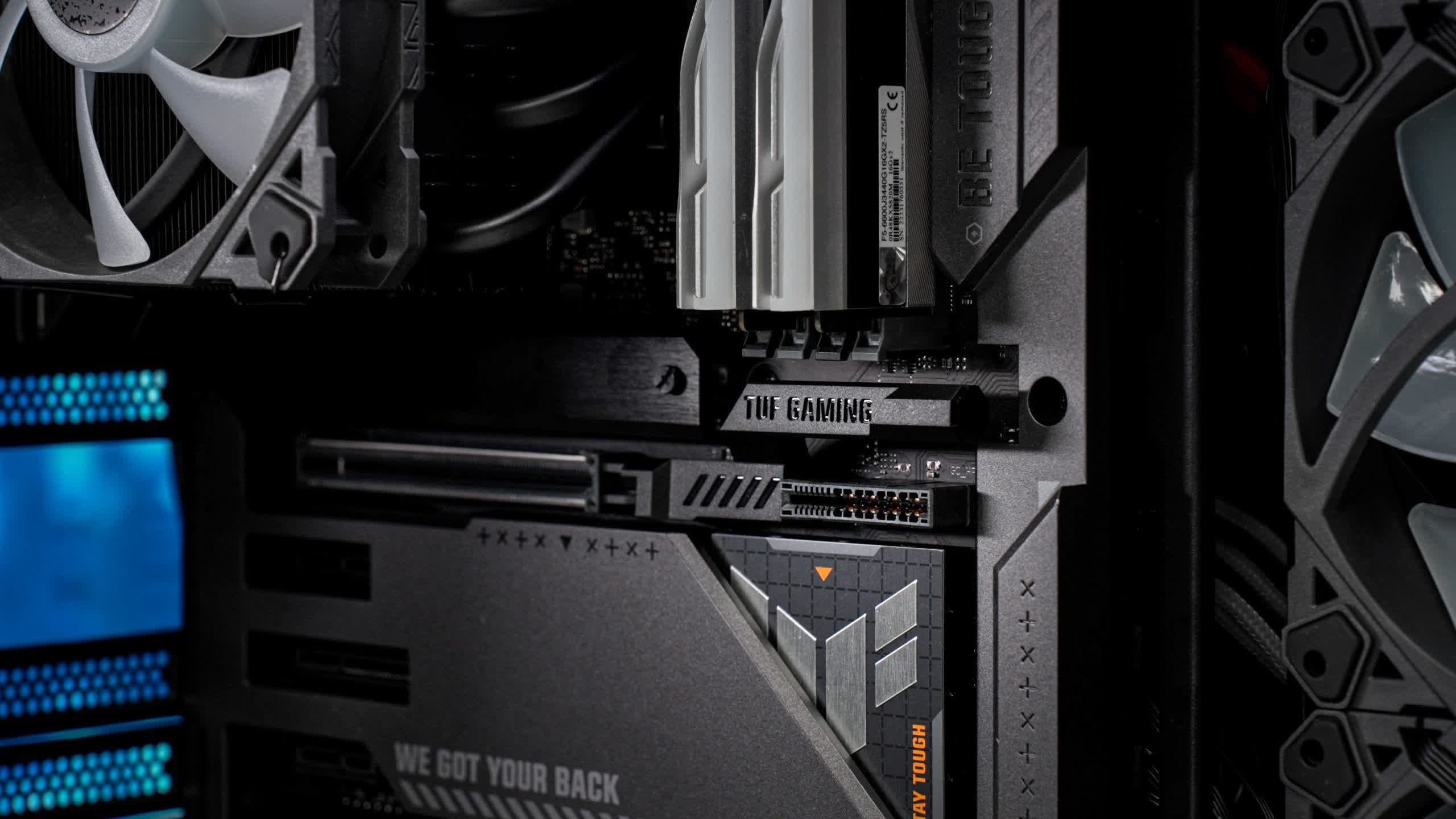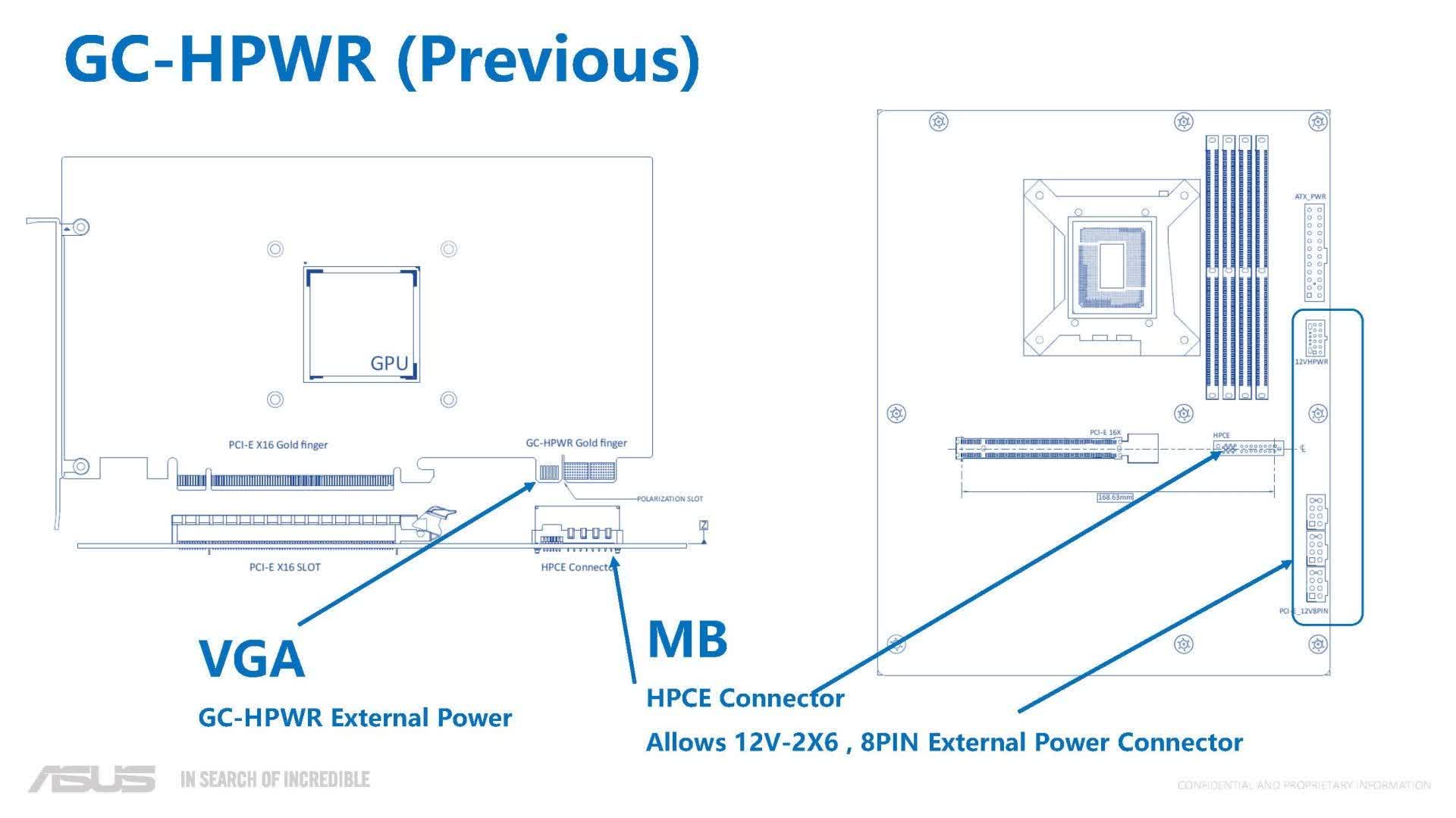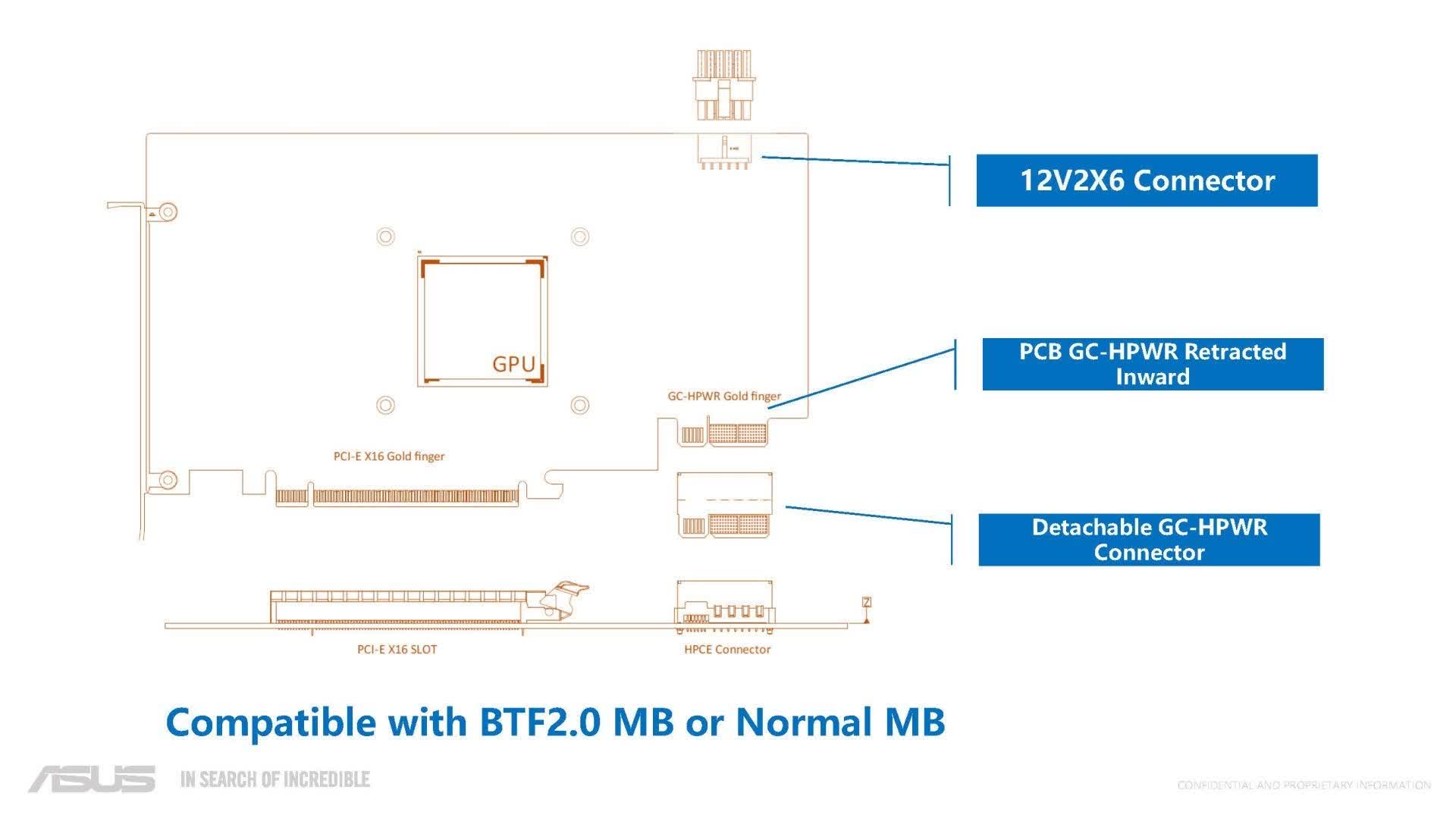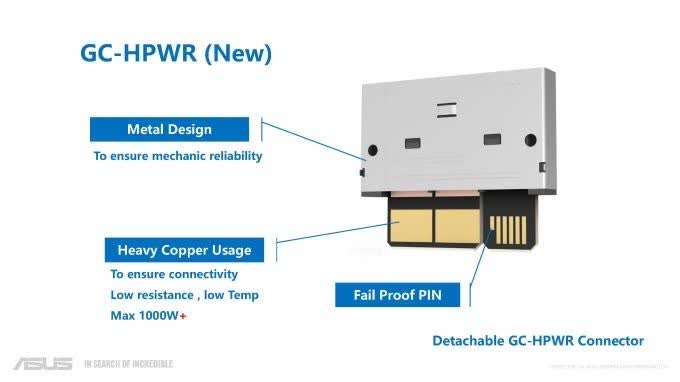Something to look forward to: Asus has spent years working to eliminate GPU power cables, and its evolving BTF standard represents a major step forward. The BTF standard shifts power delivery to a new connector located next to the PCIe slot, requiring compatible motherboards and graphics cards. A recent update, however, introduces GPUs that are compatible with both BTF and traditional motherboards, addressing the biggest obstacle to adopting this new technology.

Asus revealed more details about its planned cableless GPU power connector standard at CES last week. According to HardwareLuxx, the updated version of the Back to the Future (BTF) specification now supports non-compliant motherboards and increases the maximum supported wattage.
Previously, Asus demonstrated BTF-compatible graphics cards that replaced conventional power connectors with a new GC-HPWR gold finger, positioned alongside the PCIe x16 gold finger. BTF-compliant motherboards include a corresponding HPCE connector, giving custom PC builders one less cable to worry about.
The original BTF specification (click to enlarge)
Interest in a cableless standard surged after some Nvidia GeForce RTX 4090 users reported burning power cables. Asus aims to make PC builds simpler and safer by minimizing the number of required cables.
However, the first generation of BTF GPUs required BTF-compatible motherboards, which posed challenges for upgrades unless the entire PC industry adopted the standard. The introduction of BTF 2.0 GPUs mitigates this issue by supporting both GC-HPWR connectors and the more common 12v-2x6 connectors.
BTF 2.0 (click to enlarge)
The updated design reintroduces 12v-2x6 connectors on the outward-facing side of the graphics card, opposite the gold fingers. Meanwhile, the GC-HPWR connector is now recessed and no longer automatically aligns with the HPCE connector.
Switching to BTF mode involves using a detachable GC-HPWR gold finger, which connects the GPU's gold finger to the motherboard's HPCE connector. Although Asus hasn't yet released any BTF 2.0 graphics cards, the new design would allow users to choose between traditional motherboards and BTF-compatible models.
Detachable GC-HPWR connector (click to enlarge)
Moreover, while earlier BTF-compatible graphics cards could draw up to 600W from the motherboard, BTF 2.0 raises the limit to an impressive 1,000W. Although no consumer GPUs currently require this much power, flagship cards are getting hungrier. For instance, Nvidia's recently announced RTX 5090 has a power requirement of 575W.
The GC-HPWR and HPCE connectors are not the only innovations in the BTF lineup. Asus partner DIY-APE is already working on BTF 3.0, which aims to create a cableless connection between the power supply unit, motherboard, and GPU.
This next-generation standard introduces a new connector on the backside of the motherboard, capable of delivering up to 1,500W to multiple system components. If widely adopted, BTF 3.0 would reduce the remaining cables in a PC build to those for SATA devices and chassis components.
Cableless GPU design supports backward compatibility and up to 1,000W


